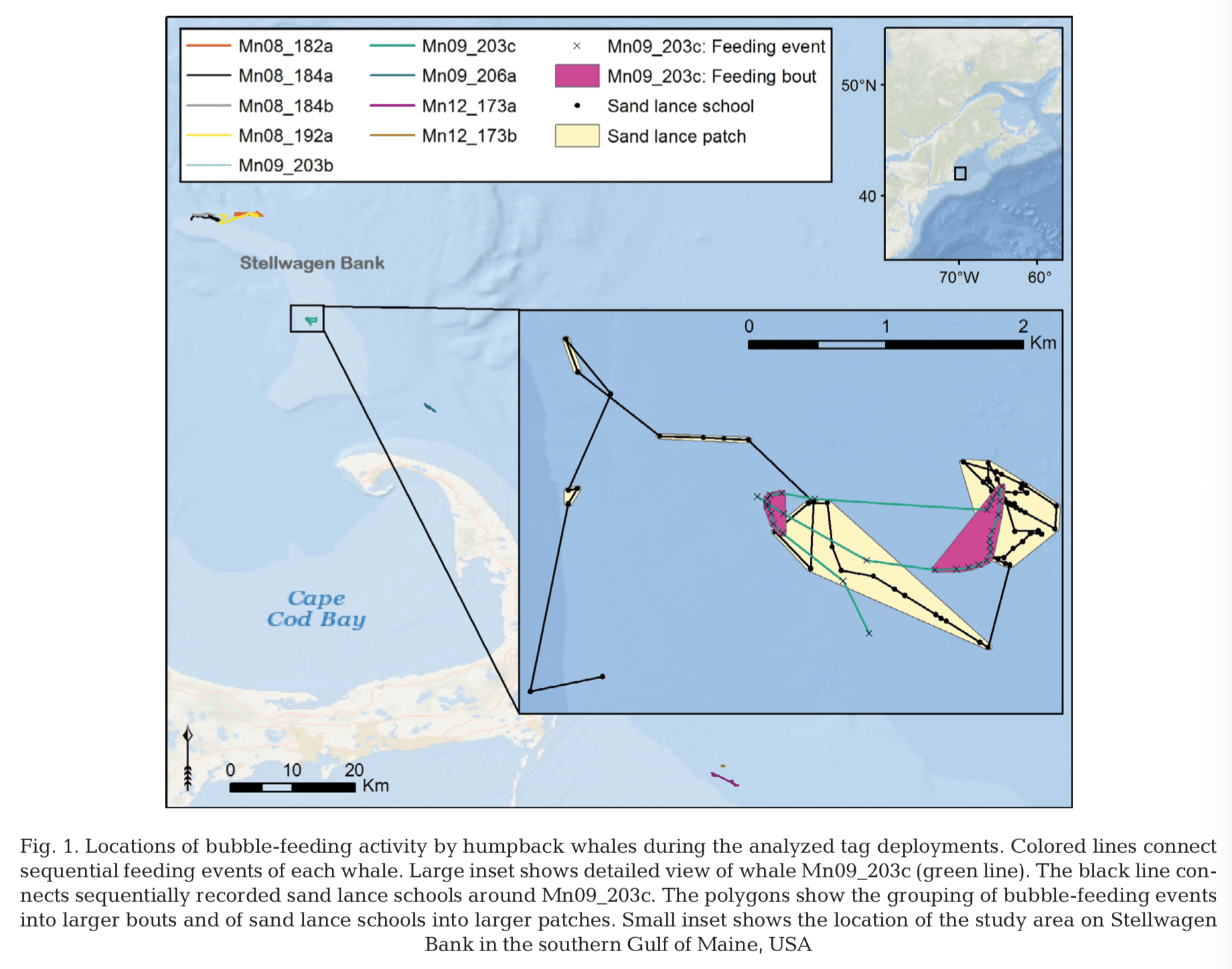I joined the Stellwagen Bank National Marine Sanctuary research team in 2005 and completed a large part of my PhD research there on fine scale foraging decisions of humpback whales. Theresa, a recent graduate from OSU, picked up the torch looking at the role of prey in structuring predator foraging decisions, using two vessels, archival tags, and EK60 acoustics. Kirchner et al. found that whale foraging bout size was linked to inter-patch-interval thus highlighting the role that spatial scale of prey plays in structuring the environment.
T. Kirchner, D. Wiley. E. Hazen, S. Parks, L. Torres, A. Friedlaender, 2018. Hierarchical foraging movement of humpback whales relative to the structure of their prey. Marine Ecology Progress Series. 607:237-250. doi: 10.3354/meps12789. PDF
ABSTRACT: Movement within and between prey patches can influence the fitness of a predator, and understanding such foraging decisions is an important topic in ecology. Most research has found sustained foraging in dense prey patches but has focused on the movement of raptorial predators that feed on single prey items, or suspension-feeders foraging on comparatively immo- bile zooplankton. The goal of this study was to investigate the fine-scale movement of a suspen- sion-feeding marine vertebrate species while foraging for mobile prey. Using animal-borne tags and surface observations, we analyzed the movement of foraging humpback whales Megaptera novaeangliae within and among acoustically detected patches of sand lance Ammodytes spp. in the water column in the southern Gulf of Maine, USA. Analyzing data from 9 whales tagged between 2008 and 2012, we found hierarchical whale foraging movements that paralleled a com- plex, hierarchically structured prey landscape. For 7 out of 9 whales, feeding bout scales corre- sponded to prey patch scales. For 6 out of 9 whales, movement between sequential feeding events was not significantly different from distances between neighboring prey schools. Targeting neigh- boring schools during sequential feeding events, as opposed to sustained foraging in profitable patches, may increase foraging success in marine suspension-feeders targeting mobile prey, which confirms findings from many other marine predator taxa feeding on mobile prey species. Our study presents novel evidence for the high behavioral plasticity of an intermittent suspension- feeder targeting mobile prey, adapting its movement to the behavior of its prey and the structure of its prey field.

